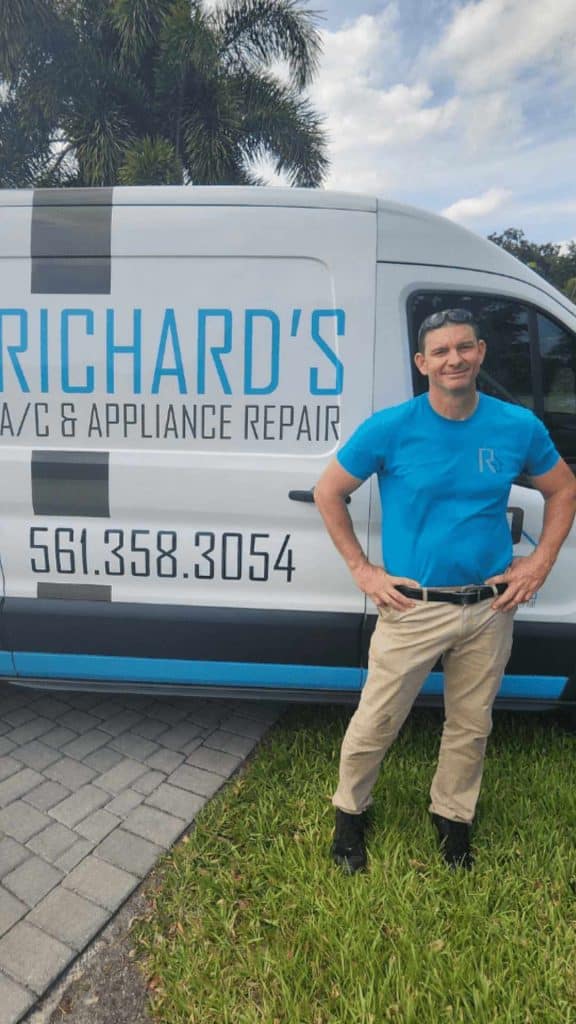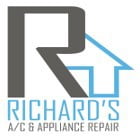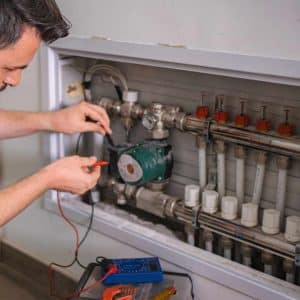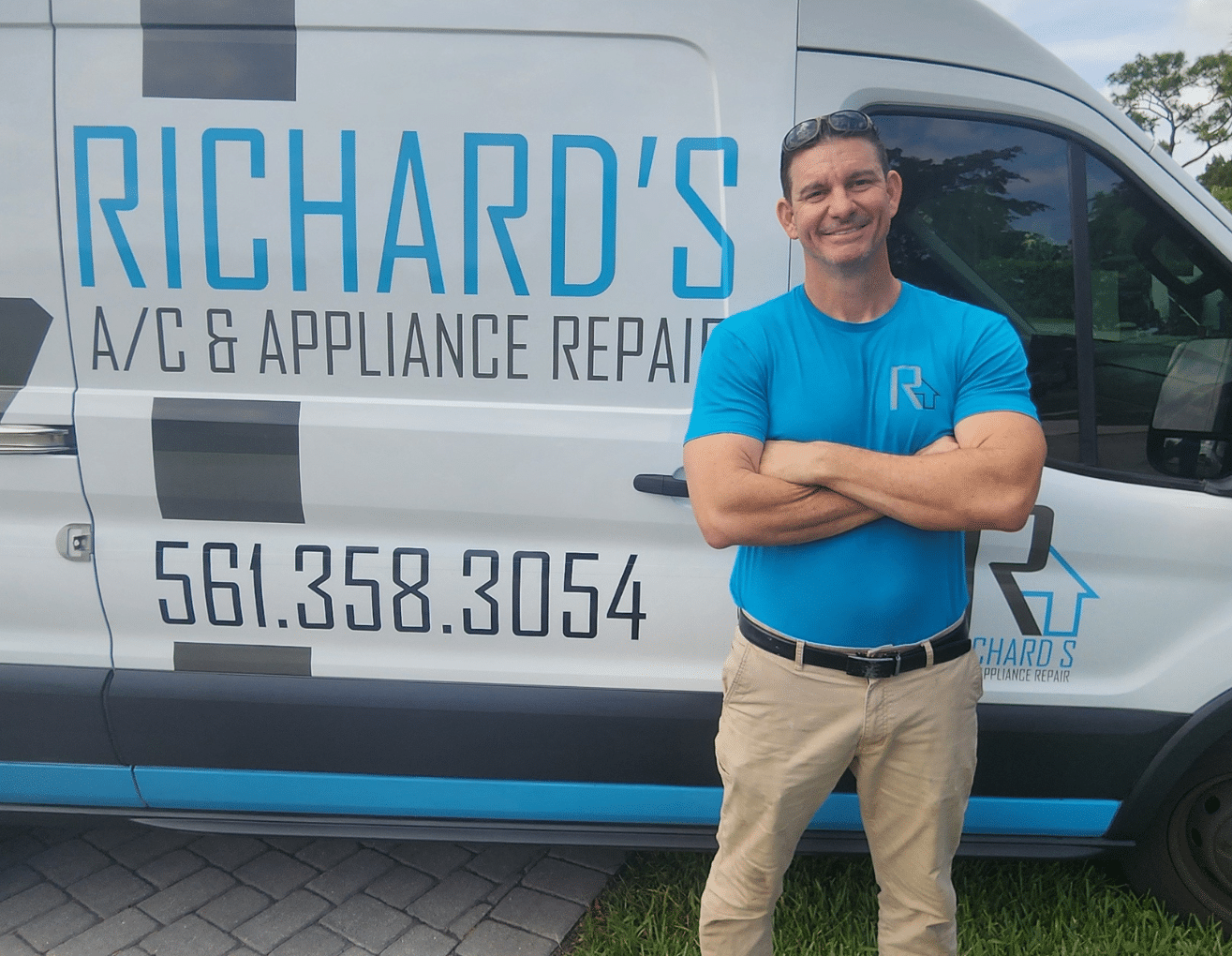When we think about our air conditioning system, our minds typically picture the large, noisy unit sitting outside our home—the condenser. It’s the part we see, the part we hear, the part we protect before a storm. But what about the other half of the team? Tucked away in a closet, garage, or attic is the quiet, unassuming workhorse of your entire cooling system: the air handler. This is the unsung hero of your home’s comfort.
While the outdoor unit is responsible for releasing heat, the indoor air handler is responsible for everything else: absorbing heat, removing humidity, filtering contaminants, and circulating cool, comfortable air throughout your entire home. Understanding what this crucial component does and why its health is so vital is key to appreciating the importance of comprehensive, professional maintenance. At Richard’s AC, we know that a truly efficient system is one where both indoor and outdoor units are in perfect harmony.
What is the Air Handler and Where is It Located?
The air handler is, quite simply, the indoor portion of your central air conditioning system. It’s essentially a large metal cabinet that houses the critical components responsible for conditioning and moving the air inside your home. In most Florida homes, you’ll typically find the air handler installed in one of three places: a utility closet, the garage, or a horizontal orientation in the attic. Its primary job is to pull warm, humid air from your living spaces, cool and dehumidify it, and then push it back out through your home’s ductwork.
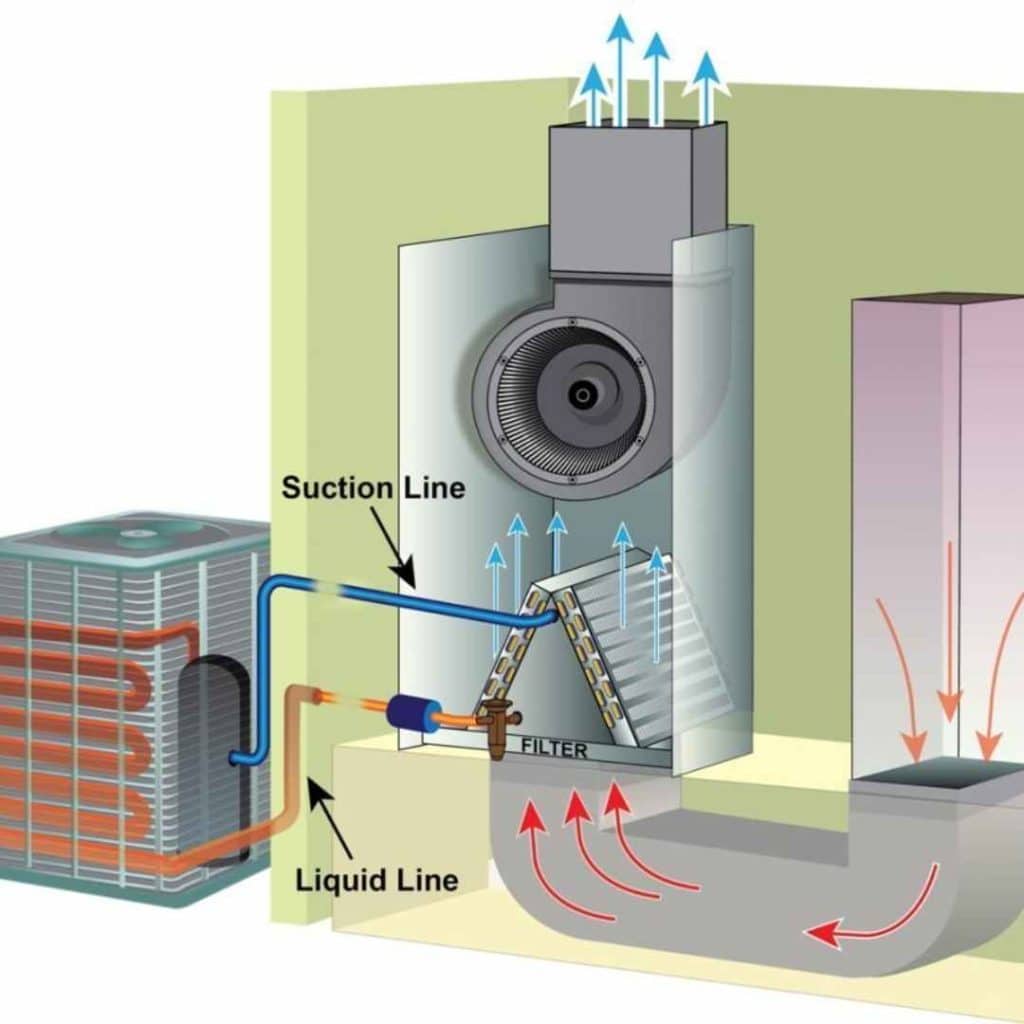
A Look Inside: The Critical Components of Your Air Handler
While it may just look like a plain box, the inside of your air handler is a hub of sophisticated activity. Here are the key players working together to keep you cool:
1. The Evaporator Coils
This is where the magic of cooling truly happens. The evaporator coil is a series of copper tubes and aluminum fins, much like a car’s radiator. Cold refrigerant from the outdoor unit is pumped through these coils, causing them to become extremely cold. As the blower fan pulls warm, humid house air across these frigid coils, two things occur: the heat from the air is absorbed into the refrigerant, and the moisture in the air condenses onto the coils’ surface. This dual action is what makes the air feel both cool and comfortably dry. The health of these coils is paramount; a layer of dust or grime can act as an insulator, severely hindering this heat and moisture transfer.
2. The Blower Motor and Fan
If the compressor is the “heart” of your AC, the blower motor and fan are the “lungs.” This powerful fan is responsible for the entire air circulation process. It creates a suction that pulls air from your home through the return vents and the air filter. It then pushes that air through the cold evaporator coils and, finally, forces the newly cooled air out through your supply ducts and into every room. The performance of this motor is critical for strong, consistent airflow. A well-maintained motor runs quietly and efficiently, while a struggling one can lead to weak airflow and higher energy bills.
3. The Condensate Drain System (Pan and Line)
All the moisture that condenses on the evaporator coils has to go somewhere. It drips down into a collection tray called a condensate drain pan. From there, it flows into a PVC pipe known as the condensate drain line, which carries the water safely outside your home. In Florida’s incredibly humid environment, this system removes gallons of water from your air every single day. As we’ve discussed previously, this drain line is a prime spot for algae and sludge to grow, making it susceptible to clogs that can cause damaging water leaks—a problem that originates right inside the air handler.
4. The Air Filter Slot
Your air filter—your first line of defense against dust and allergens—is an integral part of the air handler. It is typically located in a slide-in slot right where the air enters the unit. Its job is to protect all the sensitive components we’ve just discussed—the coils, the fan, the drain pan—from getting caked with efficiency-robbing dirt and debris.
5. The Electric Heat Strips (For Most Florida Systems)
For those occasional chilly Florida nights, most air handlers are also equipped with electric heat strips. These are large coils, similar to what you’d find in a toaster, that heat up to provide warmth when you switch your thermostat to “Heat.” Keeping these clean and ensuring their electrical connections are secure is a key part of a fall safety inspection.
Why Air Handler Maintenance is So Crucial
Neglecting the components inside your air handler can lead to some of the most common and costly AC problems:
- Severe Efficiency Loss: A layer of dirt on the evaporator coil forces the system to run much longer to cool your home, leading to skyrocketing energy bills.
- Poor Indoor Air Quality: A dirty air handler can become a breeding ground for mold, mildew, and bacteria. This contamination is then circulated directly into the air your family breathes. This is why solutions like the REME HALO® air purifier, installed within the ductwork, can be so effective in tandem with a clean system.
- Damaging Water Leaks: The most common cause of AC-related water damage is a clogged condensate drain line, a problem that begins right at the air handler.
- Complete System Failure: A struggling blower motor or a severely frozen evaporator coil (caused by poor airflow) can lead to a complete and expensive system breakdown.
The Richard's AC Approach: A Comprehensive, Whole-System Tune-Up
A true professional AC maintenance visit should never focus only on the outdoor unit. At Richard’s AC, our “old-school,” thorough approach means we give the indoor air handler the detailed attention it deserves. During a tune-up, our technicians will:
- Inspect and, if necessary, professionally clean the evaporator coils.
- Test the performance and electrical draw of the blower motor.
- Inspect and flush the condensate drain pan and line to ensure clear drainage.
- Inspect the electrical connections and safety controls of the heat strips.
- Ensure the air filter fits properly and advise on the best type for your home.
We understand that your AC is a single, integrated system, and we treat it as such.
Don’t Ignore Your Home’s Hardest-Working Hero
The next time you walk past that unassuming closet or look up at your attic, remember the unsung hero working tirelessly inside. The health of your indoor air handler is directly linked to your comfort, your energy bills, and your home’s air quality. Giving it the professional care it needs is a critical part of smart homeownership.
To ensure your entire system, both inside and out, is running at its best, you need a thorough and professional AC Repair and Maintenance Service. Richard’s AC is proud to provide expert care for homeowners in Lake Worth, Wellington, Royal Palm Beach, and throughout Palm Beach County.
Schedule your comprehensive AC tune-up today and give your air handler the attention it deserves!
